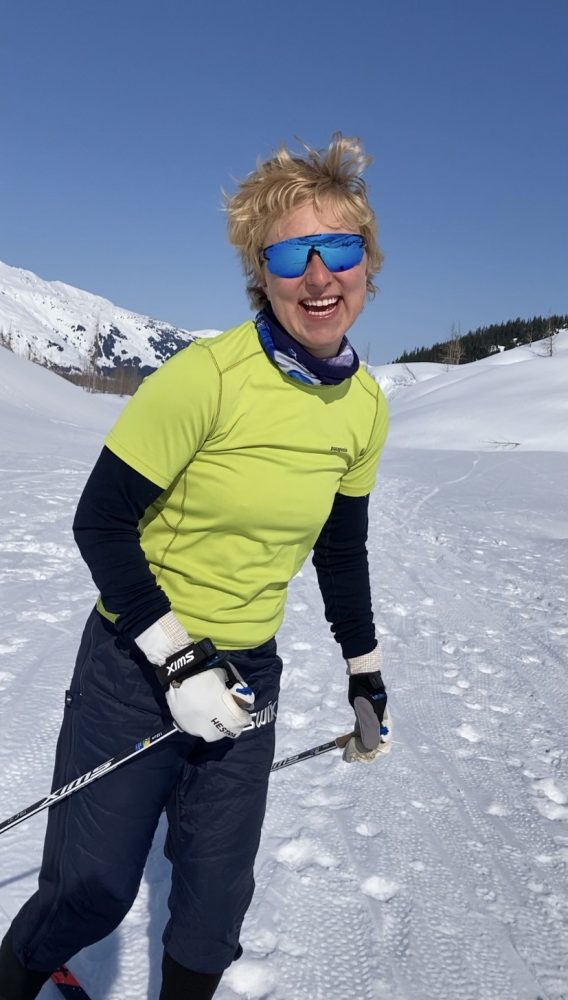
At 24-years-old, Hannah Halvorsen recently announced that she is ending the pro-skier chapter of her life, but it’s not the only transition she has on deck. This past weekend, Halvorsen also graduated from Alaska Pacific University (APU) with degrees in cognitive psychology and business administration. As a senior capstone project, focused on the psychology side of her studies, Halvorsen chose to research a topic she has been invested in throughout her time as a student-athlete: eating disorders in sport.
Given the size and scope of the topic, she began to explore ways to narrow the lens. She chose to focus on cross-country skiing to leverage her extensive experience as an athlete, but was still initially unsure of where to begin.
“I didn’t want to look at just, ‘how do we get them to go away?’ because I just don’t think that is feasible with the resources and education we have right now,” Halvorsen explained in a call.
Ultimately, she chose to consider the topic from a perspective she had not encountered previously: that of the coach.
“Not every nordic athlete has access to a dietician or to a counselor, depending on their insurance, depending on their family culture, their family support… But the majority of athletes have a coach and that’s a frequent person that they’re interfacing with. So I thought, ‘This is a really unique link that a lot of people have. How do we utilize that?’”
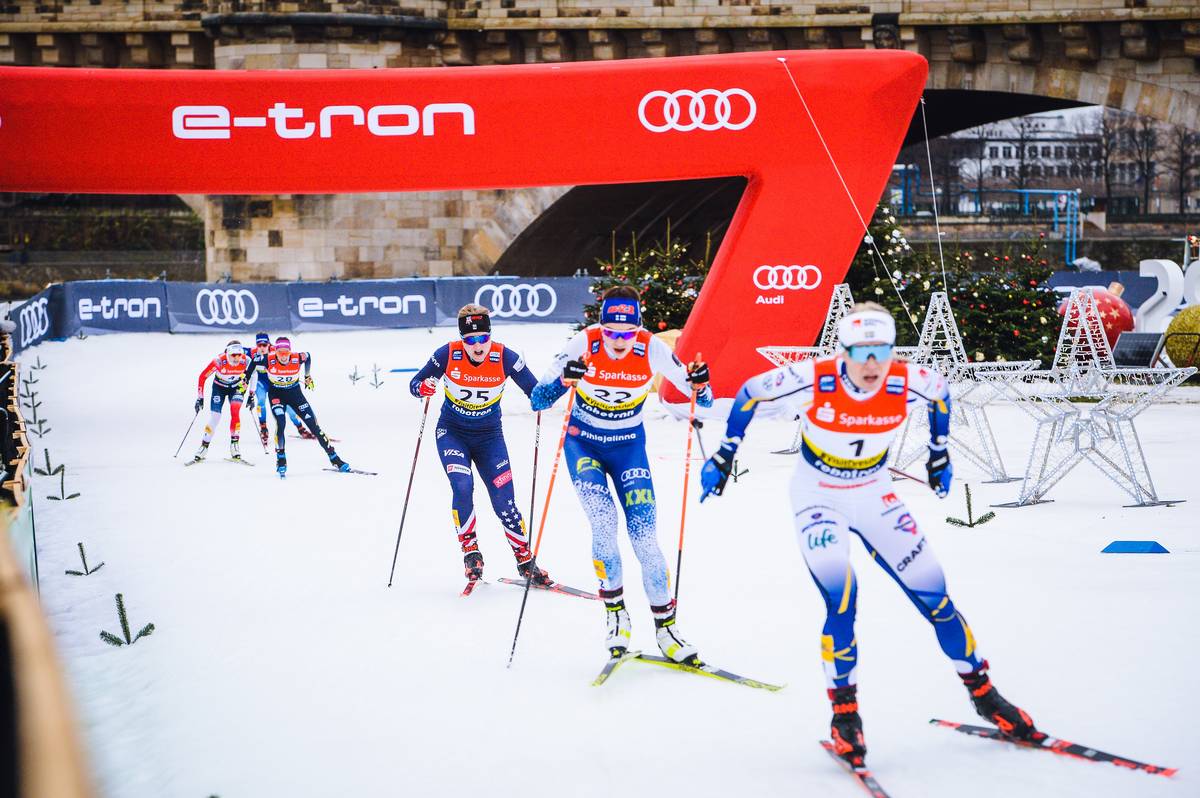
Rather than trying to identify a “solution” to a nuanced and multifaceted mental health condition, Halvorsen looked to collect a “broad perspective on what coaches think, what coaches feel, [and] what coaches see… I wondered what it looks like for them because they see athletes come and go all the time, and they see all different types of athletes.” Utilizing connections in the sport both internationally and domestically, she contacted coaches from the junior level through the World Cup.
Looking to avoid factual answers that may just be regurgitated onto a survey from a basic Google search, Halvorsen sent coaches a list of four prompts, and asked them to submit their response as a video. “I wanted to see their mannerisms and their body language and the inflection in their voice when they were responding. Essentially, where they were at with [the topic].”
Specifically, the questions were as follows:
- How do you see issues with eating disorders manifest in athletes who may or may not be struggling? What types of behaviors do you see that you associate with this problem?
- What are some of the pressures or contributing factors that you either notice or athletes tell you are the reasons that an athlete starts down the path of an eating disorder?
- What do you see as the challenges with reducing the amount of eating disorders in sport? What types of obstacles make it hard for an athlete with an eating disorder to recover?
- Do you see a difference with eating disorders between male and female skiers? Such as prevalence, the root cause, how it manifests, or anything else.
Setting her expectations low on what she would receive in return, Halvorsen was amazed as videos rolled in, and suddenly found herself with over three hours of thoughtful and in-depth responses. Some of the participants included: US National Team coaches Matt Whitcomb, Kate Barton, and Jason Cork; the Italian and Finish National Team coaches and Norwegian Women’s Team coach; current and former NCAA coaches like Cami Thompson Graves (Dartmouth), Maria Stuber (College of St. Scholastica), Marine Dusser (Univ. of AK Anchorage); elite post-graduate coaches Erik Flora (APU) and Andy Newell (BSF Pro); and junior level coaches Anna Schultz (Craftsbury), Molly Susla (Crested Butte), and Kris Hanson (Stillwater, MN).
The challenge then became condensing this footage into a concise and effective 15-minute montage, fit to a “script” that would connect the perspectives without redundancy or losing the attention of viewers. “I wanted to have this artistic effect of being [shorter] sound bites, so people would stay engaged.”
The final project: Hannah Halvorsen’s senior project video.
As she reflected on what she heard from coaches, Halvorsen identified some of the important themes that resonated with her and aligned with what she had learned through her studies on the subject.
“There were some very noticeable overlaps. A lot of [coaches] said, ‘I’m not a medical professional, I’m not qualified in eating disorder rehab or therapy or treatment. I am not the person for that. It’s not appropriate for me, it’s not something I have the skills to do, and it’s unethical for me to be doing it.’ And it was honestly really nice to hear that at all different levels, coaches do know that this isn’t their job or role…
“I also noticed that a lot of them talked about how eating disorders weren’t just about sports performance, or wanting to perform in sport. A lot of the coaches pointed out how it often came at a time where the athlete has a lot of other stress in their life, and this is just something that they have found control over, which is also something that I’ve researched and learned about in preparing for this video.”
Halvorsen pointed out that this is a key distinction. While negative body image and a preoccupation with one’s physical appearance can be symptoms of eating disorders, the root cause is typically much deeper. In the endurance sport realm, an unhealthy need for control can run parallel to the type-A, perfectionistic mindset that may also contribute to athletic development and progress in sport.
In her advocacy work in the eating disorder space, Jessie Diggins has often used the phrase “Genetics loads the gun, but the environment pulls the trigger.” Or, as Andy Newell put it in Halvorsen’s video, eating disorders are “stressful habits that manifest themselves as eating habits.”

“Another big takeaway that I would describe more as a tangible lesson from this,” Halvorsen continued. “And the coaches kind of led to it – is that the right role for a coach is to be in touch with athletes and be aware and there for them, so that if they do notice a change in behavior, they can be that link that helps the athlete get connected with the help that they need as soon as possible. They’re not the one to fix that problem, but they might be the first person who sees it. The first person who checks in with [the athlete] and says, ‘Hey, you should see someone about this.’ That, I think, is where I stand on the issue right now.”
Reflecting on her experience as a World Cup athlete and the responses of international coaches she received, Halvorsen indicated that she did not notice any significant differences in trends compared to the US, though this was an aspect she was looking to investigate.
“‘Does it vary culturally in how we see it, how it manifests, how we talk about it?’ Overall, I would say, the problems seem to come from the same issues. They seem to be similar in the way that athletes want to hide it. It’s kind of taboo to talk about it. It’s largely more taboo to talk about an eating disorder if you’re a male athlete. Those trends seem to hold very similar.”
While the pervasiveness of eating disorders and disordered eating across genders in sport is a challenging project to take on, Halvorsen indicated that she left feeling positive about the direction progress is heading.
“Something that surprised me is that I didn’t give coaches enough credit for how in tune they are and how much they care and their capacity to communicate about this. There’s so much talk about how eating disorders are uncomfortable, they’re very secretive, no one wants to talk about them. And that was why I thought, ‘I’m gonna have to send this to 200 coaches because I’m going to maybe get five who are willing to talk.’ And that wasn’t the case at all. They talked in depth about it and I think that surprised me, and made me feel really optimistic, too, because coaches are willing to have this conversation and to be very authentic and real about it. And I left feeling a little bit more optimistic that people can get in touch with the help that they need, if they’re ready or wanting that help.”
Another aspect that Halvorsen pointed out was the development that has happened surrounding eating disorder research over the last decade. She noted a shift away from pigeon-holing the disease as a women’s issue – for example, the change from Female Athlete Triad to Relative Energy Deficiency in Sport (RED-S) – and stated that there are notable differences in studies that were conducted within the last two years, in comparison to those published five or ten years ago.
“It needs to be acknowledged that there has been progress. There’s a lot more conversation about it. There’s a lot more training, there’s a lot more education and understanding of it. That needs to continually be part [of the solution].
“We need people, particularly coaches and older teammates and people in the nordic community, to identify as lifelong learners… because it’s gonna keep changing and we’re gonna get better and better at knowing how to support athletes and how to make the environment better. And so I think committing to having an open mind and staying that way is really important.”
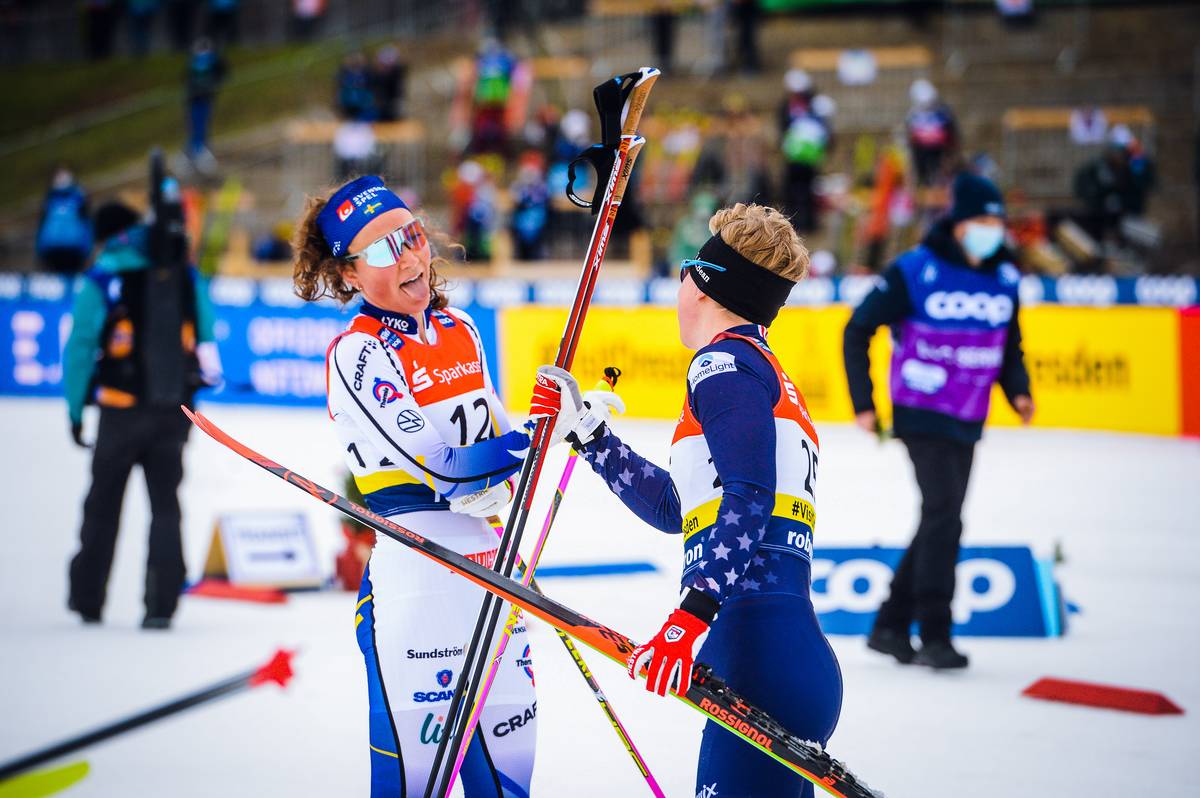
While it was not a focus of the questions posed to coaches, Halvorsen discussed her perspective from her experiences and research on what still needs to change in cross country skiing.
“I think that there is a subconscious cultural emphasis put on being lightweight, and that was being affirmed and validated and encouraged in subtle ways. Even if we’re saying the right things, athletes and kids and everyone is still aware of what is validated and when is affirmed and when is celebrated.”
She discussed the overt messages a coach could give to athletes, such as an instruction to lose weight for performance or complementing a leaner aesthetic, however, she felt that more covert messaging is pervasive and perhaps more harmful. In particular, she identified aspects of traditional ski training that may skew focus and praise toward athletes with smaller body-types.
“Every time I went to a summer training camp growing up, there was an uphill run test that, I think, held a lot of weight.”
Halvorsen called the test “iconic” and expressed how the test felt like a measuring stick, both for one’s merit as a skier and as a basis for a social hierarchy among the athletes attending the camp. “There’s just a lot of, ‘That’s the cool athlete who can run uphill.’ And it holds for men and women.”
Simultaneously, there are the challenges of a sport whose athletes race in lycra body suits throughout the winter, put in the most training hours during the heat of the summer.
“That means a lot of shirtless time, a lot of shirtless social media, and a lot of emphasis put on doing things uphill. Uphill rollerski time trials, bounding intervals, uphill running time trials, mountain running races. I think all of that plays [into developing good fitness for ski racing], and I’m not saying ‘let’s get rid of it all, don’t do it.’ It just gets validated in a way that a doublepole time trial does not… There’s never quite as much emphasis being put on someone who’s really good on their skis, or really powerful, or really tactically gifted.”
This leaves coaches in a catch-22; should they abandon a measuring stick that has served programs at all levels, both in the US and internationally, or are there alternatives?
“[The uphill run test] is a good marker of fitness, and if there was a way that you only compared to yourself and didn’t use weight loss as a way of improving your times, you would be able to track your fitness. But there’s just no comparison. You could be a better skier than someone and if they’re a lot smaller than you, they probably are going to beat you in that. And no matter what your age is, it’s hard to not see that.”
Denying the inextricable connection between size and uphill performance is not the answer in Halvorsen’s mind, as athletes will “see right through it.” Rather, she believes that an intentional shift in culture toward placing equal value on the myriad of athletic qualities that are less correlated with body size.
“How do you shift the weight to ‘it can still be valued, it should just be valued the right amount’? Like, ‘It’s one marker that we use, but we also want to see you improving on the doublepole tests. And if you lose a bunch of weight, you’re not going to. We also want to see you improving in speeds, and if you lose weight, you’re not going to improve in speeds.’ I think just giving it a little more balance is the only realistic, well-rounded solution that I see.”
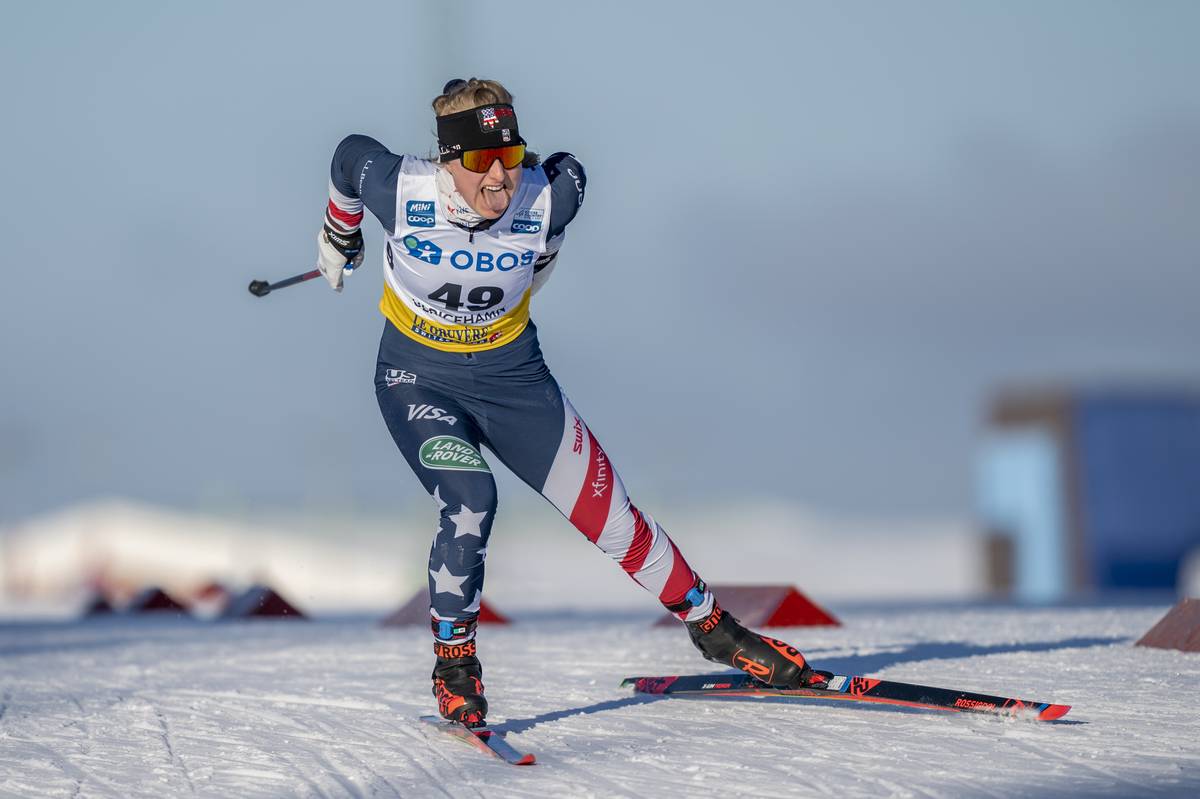
Halvorsen described herself as “a little bit blunt” and “pessimistic” as she continued to discuss systemic changes she’d like to see in the future, namely, whether athletes at U16 and U18 training camps should be allowed to go shirtless.
“The kids who go to [U16 and U18] camp are the kids who are really cool and fast on their local teams. So every kid who’s on the local team is looking up to them, and looking at the pictures that they post, and I think that they help set the trend for their local teams. They bring home that culture.”
She proposed that instead organizers ensure that tee shirts and tanks that athletes receive at those camps be made of light weight, breathable material that remains comfortable even when training in heat and humidity.
These ideas are rooted in her own experiences as a junior. Attending her first U18 camp was Halvorsen’s first exposure to the unhealthy culture permeating sport, which interrupted the otherwise healthy and unencumbered relationship she had with food and her body, developed through her family culture. Diggins has also acknowledged the disordered eating she witnessed at junior camps as a triggering example she later followed once her eating disorder took hold.
For Halvorsen, this led to a year of fixation on shrinking her body, with an aftermath of self-image and body dissatisfaction highs and lows that have persisted to the present.
“People were talking about what they eat and their weight, and I put it all together and kind of became obsessed with it… I just spent all my energy and time obsessing over what I could eat and when, that I couldn’t see anything else. Making sure to time it so that people would see me eating so that they would hopefully not know that I was doing this. It made me so miserable. It wasn’t sustainable.”
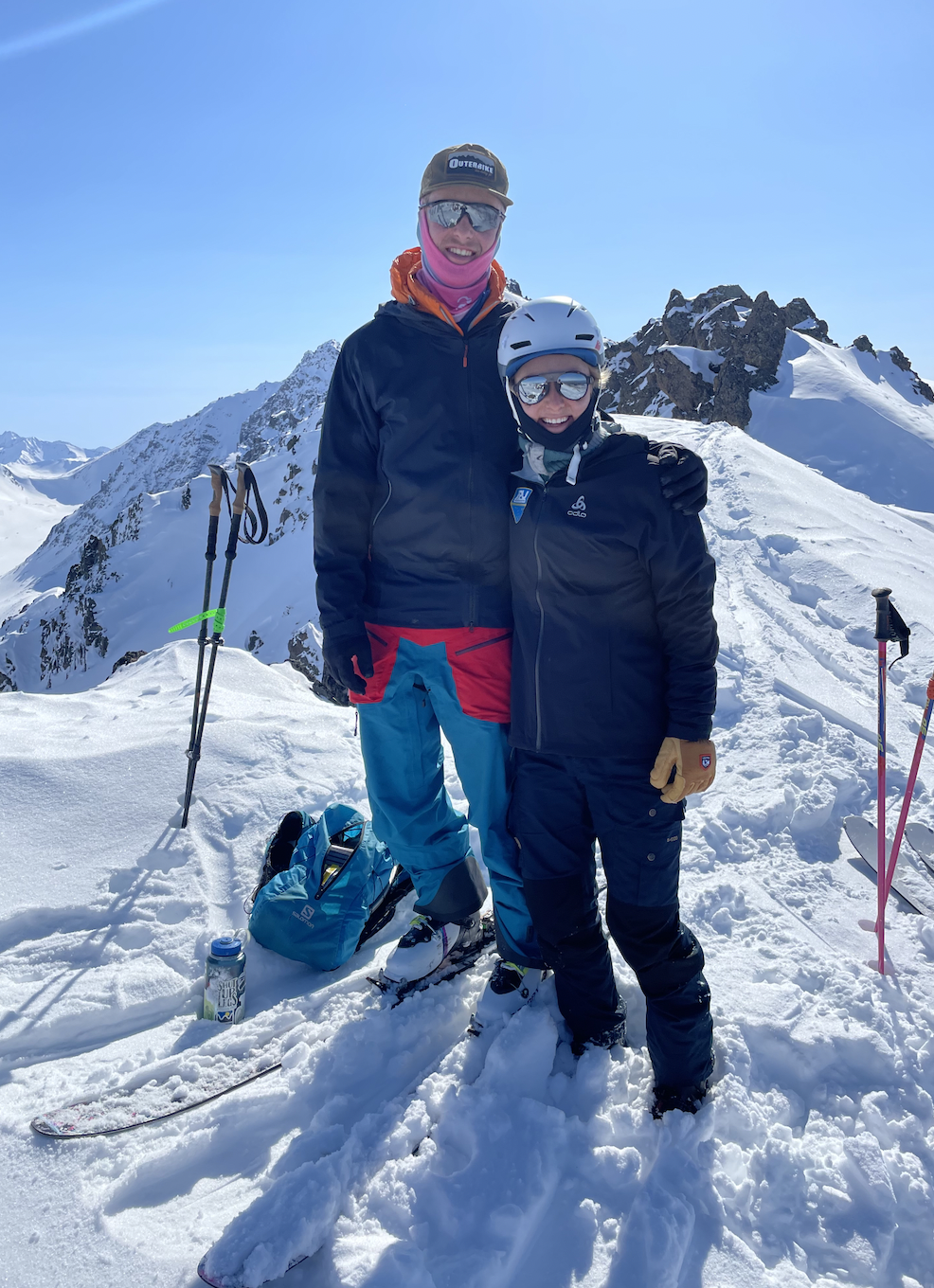
While plenty of change and education remains necessary to improve the climate surrounding athlete health, eating disorders, and RED-S, Halvorsen expressed optimism in the trends across sport culture and the outlook for future generations of athletes.
“It’s such a difficult issue and I don’t know that it’s ever going to totally go away… We’re at a point right now where it’s becoming common knowledge this is an issue and a lot of people are open to having that conversation and learning about it and it’s not as secretive. And that’s huge, because now we have enough people on board that we can start to think, ‘So what are we gonna do about it? I don’t think that we only know. I think we’re flailing a little bit. I think we’re looking, we’re asking the right people, we are trying to figure it out, and we care and we want to make this better. But I don’t think that we’ve figured out exactly what to do and put that into action yet…
“But I feel optimistic because I think I see a lot of energy being put into, ‘We can’t just ignore this. This issue is huge. And we’re willing to spend the money and the time and energy even if it makes us uncomfortable to figure out what what that is that we need to be doing.'”
Halvorsen is soon headed back to her home state of California for an internship in Berkeley that she described as “more on the business side” of her academic experience. However, she remains passionate about advocating for better education, support, and resources for coaches and athletes, and hopes to return to this type of work in the future.
“I just think there’s something so central about it, because it’s your body. It’s you. It’s so important. And I think everyone deserves the right to feel good in who they are. I don’t really care if people are good, medium, or slow at skiing, I just want them to feel good in their bodies. Skiing should be a way to feel good, not something that makes you feel bad about your body.”
Rachel Perkins
Rachel is an endurance sport enthusiast based in the Roaring Fork Valley of Colorado. You can find her cruising around on skinny skis, running in the mountains with her pup, or chasing her toddler (born Oct. 2018). Instagram: @bachrunner4646



